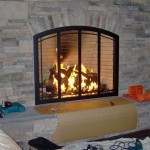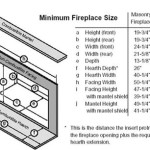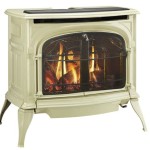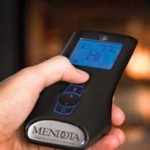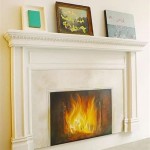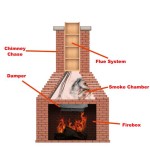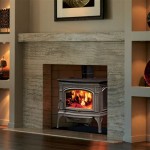Understanding LP Gas Ventless Fireplaces
LP gas ventless fireplaces, also known as unvented or vent-free fireplaces, offer a heating solution that differs significantly from traditional wood-burning or vented gas fireplaces. These appliances are designed to operate without the need for a chimney or flue, allowing for greater flexibility in installation and placement within a home. However, understanding the operational principles, safety considerations, and maintenance requirements of LP gas ventless fireplaces is crucial for informed decision-making and safe usage.
The primary distinction between vented and ventless fireplaces lies in how combustion byproducts are managed. Vented fireplaces expel exhaust gases, including carbon monoxide, out of the home through a chimney or vent system. Ventless fireplaces, conversely, are designed to burn fuel very cleanly, minimizing the production of these byproducts and allowing the exhaust gases to be released directly into the living space. This design relies heavily on precise air-to-fuel ratios and catalytic converters to ensure complete combustion.
LP gas, or liquefied petroleum gas, is a common fuel source for ventless fireplaces. LP gas is primarily composed of propane and butane, and it is stored and transported as a liquid under pressure. When used in a ventless fireplace, the LP gas is converted to a gaseous state and mixed with air before being ignited. The resulting flame produces heat that warms the room. Because the combustion products are released directly into the room, the fireplace must be equipped with safety features to monitor oxygen levels and shut off the gas supply if these levels drop to unsafe levels.
Key Point 1: Operational Principles and Safety Mechanisms
The operation of an LP gas ventless fireplace hinges on the principle of complete combustion. This means that the gas is burned so efficiently that the resulting exhaust gases primarily consist of carbon dioxide and water vapor. The ideal combustion process aims to minimize the production of carbon monoxide (CO), a colorless, odorless, and potentially deadly gas. To achieve this level of efficiency, ventless fireplaces employ several key components.
Firstly, the air-to-fuel ratio is carefully controlled. The fireplace is designed to ensure that there is sufficient air available to completely burn the LP gas. This ratio is typically pre-set by the manufacturer and should not be tampered with. Any alteration to the air-to-fuel ratio can lead to incomplete combustion and increased CO emissions. The burner design plays a critical role in achieving the correct mixture. Specialized burners are engineered to distribute the gas evenly and ensure optimal contact with the air.
Secondly, many ventless fireplaces incorporate a catalytic converter. This device contains a catalyst, typically a precious metal, that promotes the oxidation of any remaining carbon monoxide into carbon dioxide. The catalyst facilitates the reaction even at relatively low temperatures, further reducing CO emissions. The catalytic converter is a crucial component for maintaining safe indoor air quality.
Thirdly, ventless fireplaces are equipped with an Oxygen Depletion Sensor (ODS). This safety device continuously monitors the oxygen level in the room. If the oxygen level drops below a certain threshold, typically around 18% or 19%, the ODS will automatically shut off the gas supply to the fireplace. This prevents the fireplace from continuing to operate in an oxygen-depleted environment, which could lead to incomplete combustion and increased CO production. The ODS is a vital safety feature that protects occupants from the dangers of carbon monoxide poisoning and asphyxiation.
It's important to note that the safety mechanisms of a ventless fireplace are only effective if they are properly maintained and functioning correctly. Regular inspection and cleaning of the fireplace, including the burner and ODS, are essential. Any signs of damage or malfunction should be addressed immediately by a qualified technician.
Key Point 2: Installation Requirements and Room Size Considerations
While LP gas ventless fireplaces offer installation flexibility compared to vented models, they still have specific requirements that must be met to ensure safe and efficient operation. Proper installation is paramount for the safety of the occupants and the longevity of the appliance.
One of the most critical considerations is room size. Ventless fireplaces require a minimum room size to ensure that there is sufficient air volume to dilute the combustion byproducts. The required room size is typically specified by the manufacturer and is based on the BTU (British Thermal Unit) output of the fireplace. A higher BTU rating indicates a greater heat output and, consequently, a larger required room size. Operating a ventless fireplace in a room that is too small can lead to a buildup of carbon dioxide and water vapor, potentially creating an uncomfortable and even hazardous environment.
Adequate ventilation is also essential, even though the fireplace is designed to operate without a dedicated vent. The room should have a source of fresh air, such as a door or window that can be opened periodically. This helps to replenish the oxygen supply and remove any accumulated combustion byproducts. The manufacturer's instructions will specify the minimum ventilation requirements for the fireplace.
Furthermore, ventless fireplaces should not be installed in confined spaces, such as bedrooms or bathrooms. These areas typically have limited ventilation and may not meet the minimum room size requirements. Installing a ventless fireplace in such spaces can significantly increase the risk of carbon monoxide poisoning and other health problems.
The fireplace must be installed on a non-combustible surface and should be located away from flammable materials such as curtains, furniture, and paper. The manufacturer's instructions will specify the minimum clearance distances from combustible materials. These clearances must be strictly adhered to in order to prevent fire hazards. It is always recommended to consult a qualified professional for the installation of an LP gas ventless fireplace to ensure compliance with all applicable codes and regulations.
Key Point 3: Maintenance and Inspection for Optimal Performance
Proper maintenance and regular inspection are crucial for ensuring the safe and efficient operation of an LP gas ventless fireplace. Neglecting these aspects can lead to reduced performance, increased emissions, and potential safety hazards. A consistent maintenance schedule will extend the lifespan of the appliance and protect the health of the occupants.
One of the most important maintenance tasks is cleaning the burner. Over time, dust, lint, and other debris can accumulate on the burner, obstructing the flow of gas and air. This can lead to incomplete combustion and increased CO emissions. The burner should be cleaned periodically using a soft brush or vacuum cleaner. The manufacturer's instructions will provide specific guidance on how to clean the burner safely and effectively.
The Oxygen Depletion Sensor (ODS) should also be inspected regularly to ensure that it is functioning properly. The ODS is a critical safety device, and its failure can have serious consequences. The ODS can be tested by simulating an oxygen-depleted environment and verifying that the gas supply shuts off as expected. Again, consult the manufacturer's instructions for the proper testing procedure.
The catalytic converter, if present, should be inspected for damage or deterioration. The catalyst can become deactivated over time, reducing its effectiveness in converting carbon monoxide to carbon dioxide. If the catalytic converter is damaged or appears to be malfunctioning, it should be replaced by a qualified technician.
In addition to these specific maintenance tasks, it is also important to have the fireplace professionally inspected at least once a year by a qualified technician. The technician can perform a thorough inspection of all components, including the gas lines, burner, ODS, and catalytic converter. They can also check the fireplace for proper ventilation and compliance with safety codes. A professional inspection can identify potential problems before they become serious, ensuring the continued safe and efficient operation of the fireplace.
Furthermore, the use of a carbon monoxide detector is highly recommended in any home with a ventless fireplace. While the fireplace is designed to minimize CO emissions and is equipped with an ODS, a CO detector provides an additional layer of protection. The detector will sound an alarm if CO levels in the room rise to a dangerous level, giving occupants time to evacuate the premises.
Finally, it is important to understand the limitations of ventless fireplaces. While they offer installation flexibility and can provide supplemental heat, they are not intended to be the primary source of heat for a home. Over-reliance on a ventless fireplace for heating can lead to excessive humidity and a buildup of combustion byproducts in the indoor air. It is also crucial to follow all of the manufacturer's instructions regarding the safe operation and maintenance of the fireplace. Failure to do so can void the warranty and increase the risk of accidents.
:max_bytes(150000):strip_icc()/ventless-gas-fireplaces-4160746-hero-f9d4bdcd9bd446eb84406de306f790ba.jpg?strip=all)
How To Pick Out A Ventless Gas Fireplace

50 Free Standing Ventless Gas Fireplace Visualhunt

Ventless Gas Fireplace Propane

Radiance Vent Free Gas Stove The Place

Hearthsense A Series Liquid Propane Ventless Fireplace Insert 20 000 Btu Millivolt Control Model Ali Com

50 Free Standing Ventless Gas Fireplace Visualhunt

Bluegrass Living 55 In Black Ventless Liquid Propane Gas Fireplace The Fireplaces Department At Com

Pleasant Hearth 27 500 Btu 42 In Convertible Ventless Propane Gas Fireplace Cherry Vff Ph26lp The Home Depot

Duluth Forge 55 In Black Ventless Natural Or Liquid Propane Gas Fireplace The Fireplaces Department At Com

Hearthsense Liquid Propane Ventless Gas Tower Corner Fireplace 20 000 Btu Cherry Finish 170089 The Home Depot
Related Posts


